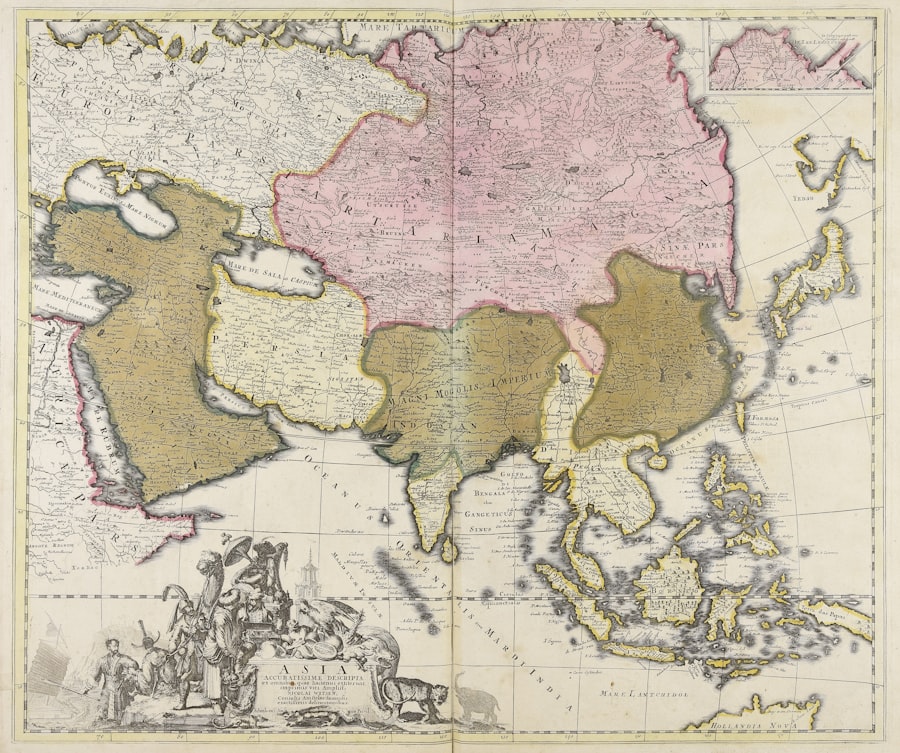Ethnohistory is a multidisciplinary field that merges the methodologies and insights of history and anthropology to study cultures, particularly those of Indigenous peoples, through their own narratives and historical contexts. This approach emphasizes the importance of understanding historical events not just through written records but also through the oral traditions, cultural practices, and social structures of the communities being studied. Ethnohistory seeks to reconstruct the past by integrating various sources of information, including archaeological findings, ethnographic studies, and oral histories, thereby providing a more nuanced understanding of how cultures evolve over time.
The term “ethnohistory” itself reflects this blending of disciplines.
By focusing on the lived experiences of these communities, ethnohistory challenges dominant historical narratives that may overlook or misrepresent Indigenous voices.
This field not only enriches our understanding of history but also serves as a tool for cultural preservation, allowing communities to reclaim their narratives and assert their identities in the face of colonial histories.
Key Takeaways
- Ethnohistory is the study of the history of indigenous peoples and their cultures, combining historical and anthropological approaches.
- Ethnohistorical research explores the cultural boundaries of indigenous peoples and examines the intersection of history and anthropology.
- Navigating ethical and methodological boundaries is a key challenge in ethnohistorical research, requiring careful consideration of cultural sensitivity and representation.
- Oral histories play a crucial role in ethnohistorical research, offering insights into the boundaries of memory and narrative within indigenous communities.
- Future directions in ethnohistorical scholarship involve pushing the boundaries of interdisciplinary inquiry, seeking new ways to understand and interpret the histories of indigenous peoples.
The Intersection of History and Anthropology: Exploring Ethnohistorical Approaches
The intersection of history and anthropology in ethnohistorical research creates a rich tapestry of inquiry that allows scholars to explore the complexities of human experience. Historians typically rely on written documents, archival materials, and quantitative data to construct narratives about the past. In contrast, anthropologists often focus on contemporary cultures, utilizing participant observation and ethnographic methods to understand social practices and beliefs.
Ethnohistory bridges these two approaches by employing both qualitative and quantitative methods to analyze how historical events shape cultural identities and social structures. One prominent example of this intersection can be seen in the work of scholars like William W. Fitzhugh, who has examined Arctic Indigenous cultures through both archaeological evidence and oral histories.
Fitzhugh’s research illustrates how ethnohistorical approaches can reveal the dynamic interplay between environmental changes and cultural adaptations over centuries. By integrating archaeological findings with Indigenous oral traditions, he provides a comprehensive view of how these communities have navigated their histories, thus demonstrating the value of combining historical and anthropological perspectives.
Ethnohistory and the Study of Indigenous Peoples: Examining Cultural Boundaries

Ethnohistory plays a crucial role in the study of Indigenous peoples by examining cultural boundaries and the ways in which these communities have interacted with external forces throughout history. This field recognizes that Indigenous cultures are not static; rather, they are dynamic entities that evolve in response to various influences, including colonization, globalization, and environmental changes. Ethnohistorical research often focuses on how Indigenous peoples have maintained their cultural identities while adapting to new circumstances, thereby challenging simplistic notions of cultural preservation.
For instance, the ethnohistorical study of the Navajo Nation reveals how this Indigenous group has navigated the complexities of modernity while retaining core aspects of their cultural identity. Researchers have documented how the Navajo have integrated contemporary practices into their traditional frameworks, such as using technology to promote language revitalization efforts. This blending of old and new illustrates the resilience of Indigenous cultures and highlights the importance of understanding cultural boundaries as fluid rather than fixed.
Challenges and Controversies in Ethnohistorical Research: Navigating Ethical and Methodological Boundaries
Despite its contributions to understanding Indigenous histories, ethnohistorical research is not without its challenges and controversies. One significant issue is the ethical responsibility researchers have toward the communities they study. Historically, many scholars have approached Indigenous cultures from an outsider’s perspective, often perpetuating colonial narratives that marginalize these groups.
As a result, contemporary ethnohistorians must navigate complex ethical considerations when conducting research, ensuring that they engage with communities in respectful and collaborative ways. Methodologically, ethnohistorians face challenges related to source material. The reliance on oral histories can be problematic due to issues of memory, interpretation, and transmission over generations.
Oral traditions may vary significantly between different storytellers or may be influenced by contemporary events, leading to questions about their reliability as historical sources. Ethnohistorians must critically assess these narratives while also recognizing their value in conveying cultural meanings and community perspectives. Balancing these methodological concerns with ethical responsibilities is essential for producing credible and respectful scholarship.
The Role of Oral Histories in Ethnohistorical Research: Exploring the Boundaries of Memory and Narrative
Oral histories are a cornerstone of ethnohistorical research, providing invaluable insights into the lived experiences and cultural practices of Indigenous peoples. These narratives serve as a means for communities to articulate their histories, preserving knowledge that may not be documented in written form. Oral traditions often encompass a wide range of topics, including migration stories, significant events, and cultural practices, allowing researchers to gain a deeper understanding of how communities perceive their pasts.
The significance of oral histories extends beyond mere documentation; they are also vital for community identity and cohesion. For example, among the Maori people of New Zealand, oral traditions play a crucial role in maintaining connections to ancestors and land. Ethnohistorical research that incorporates these narratives can illuminate how Maori identity has been shaped by historical events such as colonization while also highlighting ongoing efforts for cultural revitalization.
However, researchers must approach these oral histories with sensitivity, recognizing that they are not just historical accounts but living narratives that continue to evolve within their cultural contexts.
Future Directions in Ethnohistorical Scholarship: Pushing the Boundaries of Interdisciplinary Inquiry

As ethnohistory continues to evolve as a field, future scholarship is likely to push the boundaries of interdisciplinary inquiry even further. The integration of digital humanities tools offers exciting possibilities for ethnohistorical research. For instance, digital mapping technologies can help visualize historical migrations or changes in land use among Indigenous communities, providing new insights into spatial relationships and cultural adaptations over time.
Moreover, there is an increasing recognition of the importance of collaborative research practices that involve Indigenous scholars and community members as co-researchers rather than subjects of study. This shift not only enhances the credibility of ethnohistorical research but also empowers Indigenous communities to take ownership of their narratives.
By fostering partnerships between academic institutions and Indigenous organizations, future ethnohistorical scholarship can contribute to decolonizing methodologies and promoting social justice within academic discourse. In conclusion, ethnohistory stands at a unique crossroads where history and anthropology converge to provide a richer understanding of human experiences across cultures. By prioritizing Indigenous voices and integrating diverse methodologies, this field continues to challenge traditional narratives while fostering a deeper appreciation for the complexities of cultural identity and historical memory.
As it moves forward into new territories of inquiry, ethnohistory holds great potential for illuminating the past while actively engaging with contemporary issues faced by Indigenous peoples around the world.
If you are interested in exploring the intersection of history and mathematics, you may also enjoy reading about the development of algebra, trigonometry, and arithmetic in the Renaissance and the emergence of analytic geometry in the seventeenth century by clicking on this link. This article delves into the advancements made in these mathematical fields during these time periods, shedding light on the intellectual progress of the era.
FAQs
What is ethnohistory?
Ethnohistory is the study of the history of indigenous peoples and their cultures, using a combination of historical and anthropological methods.
What are the key concepts in ethnohistory?
Key concepts in ethnohistory include the study of indigenous cultures, their interactions with colonial powers, the impact of colonization on indigenous societies, and the preservation of indigenous knowledge and traditions.
What are the boundaries of ethnohistory?
The boundaries of ethnohistory are fluid and can encompass a wide range of topics, including but not limited to, the study of indigenous languages, oral traditions, material culture, social organization, and political systems.
How does ethnohistory differ from traditional history?
Ethnohistory differs from traditional history in that it focuses specifically on the history and culture of indigenous peoples, and often incorporates anthropological methods and perspectives.
Why is ethnohistory important?
Ethnohistory is important because it provides a more comprehensive understanding of the history and experiences of indigenous peoples, and helps to challenge and correct historical narratives that have often marginalized or misrepresented indigenous cultures.






















+ There are no comments
Add yours